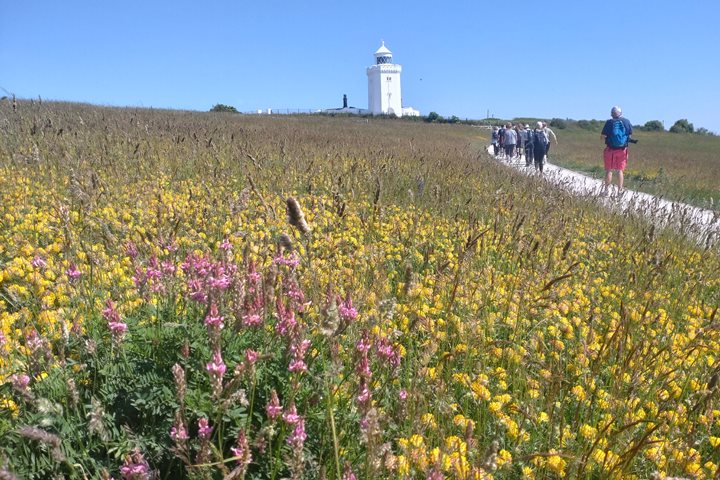For many guests on the voyage, this was the day they were most anticipating. We spent the whole day visiting sites of the D-Day invasion and the 100-day Normandy battle. Expectations were high in our hearts and minds after a visit to the Caen Memorial yesterday and a very thorough introduction to the events (and their magnificent logistics) by Stephen Fisher.
Our tour began with a drive through the peaceful countryside that is marked with verdant hedges – once a major obstacle for the Allied soldiers – to the great American Cemetery at Colleville-sur-Mer, which overlooks the Omaha beaches. It is hard to describe such a visit: ‘the countless white crosses stand mute in the sand,’ as the song has it. Cared for to perfection, the splendid park is a place of quiet and deep respect. Some guests went looking for a specific cross with a specific name. Others just walked over the lawn in silence.
From there, we took a short drive through narrow, winding lanes to the beach itself. The tide was going out. Apart from two striking monuments, very little reminds visitors of the events that took place there. Nevertheless, simply looking up at the high range of dunes, which incoming troops had to overcome, is quite impressive. A new monument created by Anilor Banon stands on the beach: an array of striking, shining metal objects, like the leaves of giant plants, the monument is entitled Les Braves, or the Brave: ‘sons, husbands and fathers, who risked their lives and often sacrificed their lives in the hope of liberating the French.’
We had the chance to reflect and restore ourselves during lunch in the very pretty fishing town of Port-en-Bessin-Hupain. Soon, we moved to a new location, Pointe du Hoc. In the early morning of the landings, 225 Rangers climbed up the steep cliff and attacked what they believed was a formidable German battery of five 155 mm guns. They occupied the spot with heavy losses only to find that the guns had been removed just before the invasion. The Rangers held on; only 90 men were standing by the time they were relieved. In this peaceful, sunny place, we observed crumbling bunkers and deep pits everywhere, signs of a massive bombardment by the supporting fleet.
Then we moved to Utah Beach, where we again spent a short time with the powerful monuments and the vast space above us – a sunny day, where the day of the invasion had been wet and cloudy. Half an hour farther inland is Ste Mère Eglise, a small town and the scene of a dramatic nightly landing by troops of the 82nd Airborne. Legend has it – and for a change, the legend is true – that one of the men, Steele, managed to get his parachute trapped on the spires of the parish church. He was shot at, wounded, and pretended to be dead before he was cut loose and made prisoner.
In Ste Mère Eglise, signs of the Airborne raid are everywhere – in the brand new Airborne Museum, which some of us visited, in the numerous Army Surplus Stores around the town square, which have a lively trade in t-shirts and memorabilia, and even in the ‘Hair born’ barbershop.
There was also room for some good French ice cream and a beer or two, but this was not a day that passed without emotion.
And then, we covered the last stretch to Cherbourg, where National Geographic Explorer was alongside, ready to take us to Dover.






